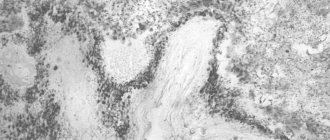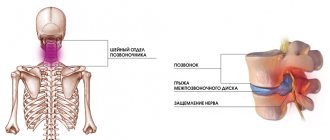The Ukrainian woman died of old age at 10 years old. The cause of death was a rare disease that causes premature aging - progeria. There is no cure for it. However, many sufferers not only live to adulthood, but also manage to become famous throughout the world.
Her mother announced the girl's death on Instagram. She noted that the child’s heart simply stopped.
“Irochka died. Yesterday her heart stopped. I’m sorry, honey, that I couldn’t save you this time,” the woman wrote.
The girl was diagnosed with progeria at the age of five. This rare genetic disease is known as Hutchinson-Gilford syndrome. It causes premature aging of the body, the skin and internal organs change.
In most patients, the first signs of progeria appear at two to three years of age. Determining the disease is quite simple. The child's growth slows down sharply, his skin becomes thin, dry and wrinkled, and veins begin to show through it. The patient has a large head with a “bird-like” face, and an underdeveloped lower jaw. Muscles atrophy and degenerative processes occur in the teeth. Changes in the myocardium and atherosclerosis are noted.
In one year, a child can age 10 years. Most patients die by 13. Progeria occurs in one in four to eight million newborns. In total, about 350 cases of Hutchinson-Gilford syndrome have been recorded in the world.
General information
Progeria is a genetic disease that is considered one of the rarest, with approximately 350 cases recorded throughout human history.
The most famous people with progeria are DJ Leon Botha and motivator Sam Burns. Progeria is not very common in Russia - only about 80 cases have been registered. The main feature of this genetic defect is premature aging of the body, which is accompanied by significant changes in the skin and the functioning of internal organs. From the Greek progeros translates as “prematurely aged.”
Leon Botha
As Wikipedia indicates, the disease is assigned the ICD-10 code: E34.8 and refers to other specified endocrine disorders.
Story
Progeria was first described by British physician Jonathan Hutchins in 1886. An example was the case of a 6-year-old boy. The disease was manifested by atrophy of the skin and its appendages. However, the term "progeria" was introduced by Hastings Guilford, who studied some of the features of the pathology.
The adult type of the disease was described by the German specialist Karl Wilhelm Otto Werner. He observed the course of the pathology while still a student using the example of four patients. He outlined all his observations in his dissertation in 1904.
In total, more than 350 cases of the disease have been recorded worldwide. Only one patient was black. From this it was concluded that Europeans are more susceptible to this pathology. Sam Burns made a major contribution to the spread of the problem of this disease. The motivational speaker did a lot to make the general public aware of the disease. Sam's parents founded the Progeria Research Foundation, whose activities are aimed at studying progeria and attracting the attention of the general public to it.
Pathogenesis
The pathogenesis of childhood progeria is based on a sudden mutation in the LMNA gene (in isolated cases it can be congenital), the gene is responsible for encoding lamin A - proteins built into the nuclear lamina and holding the membranes of the cell nucleus. The nuclear lamina is a rigid fibrillar network structure associated with chromatin threads and involved in their organization.
Violations of these structures lead to instability of cell nuclei, disruption of DNA repair processes, cloning of fibroblasts, which causes aging of the entire organism and triggers such classical processes as a result of degradation of the cellular code, such as baldness and graying, disruption of the cardiovascular system, impaired vision, generalized osteoporosis , cancer formation.
Treatment of progeria
The first attempts to treat childhood progeria were made back in 2006, also in mouse models. It was possible to recreate the entire process of entry of prelamin-A (a kind of “blank” for lamin-A) into the nucleus. When prelamin-A is sent to the nucleus, a farnesyl molecule is attached to it, signaling that this molecule should be added to the membrane lining the inner surface of the nucleus. Farnesyl appears as an extra "tip" of this molecule, and upon arrival in the nucleus must be cut off, which is done using the enzyme ZMPSTE24. In patients with progeria, this enzyme does not work, farnesyl is not cut off, and it is due to the incorporation of lamin A with farnesylated tips into the nuclear shell that this shell is deformed and loses its integrity.
In 2006, for the first time, it was possible to slow down the development of progeria in mice in which the development of this disease was specially provoked. They blocked the enzyme farnesyltransferase, which hooks the farnesyl tip to the lamin. As a result, lamin lost its “identification mark”, and only a small part of the molecules of this protein began to enter the cell nucleus. This was done using so-called farnesyltransferase inhibitors (FTIs), which are generally toxic to the body and slow down cell growth. But it is precisely because of this property that they are used to suppress cancer tumors.
In November 2021, the US Food and Drug Administration (FDA) finally approved the first drug that works in this way. It is called lonafarnib and on average prolongs the life of patients with progeria by 2.5 years, that is, by 15-20%.
Resetting or reversing the biological clock that regulates normal aging is a much more complex task, the discussion of which is beyond the scope of this publication. I advise those interested to read about this in Polina Loseva’s book “Counterclockwise” - it was this book that prompted me, after a long absence, to write about such a difficult topic as progeria. Be that as it may, thoughtful, doomed freak children, decrepit before our eyes, are the real embodiment of inevitable death, and it is the understanding of their suffering that opens the only realistic path to victory over old age, pushing us to interpret old age as a disease, and not as an inevitability. Therefore, they still give us hope, and also remind us how fleeting life is, and how important it is to appreciate it in all its manifestations.
Classification
There are childhood progeria - Hutchinson Guilford syndrome and adult progeria - Werner syndrome .
Unlike children, which manifests itself at 5-8 months of age, in adults the symptom complex of premature aging develops at approximately 20-30 years, beginning during puberty. The body and face begin to change as in the picture below (progeria - photo) with a difference of 33 years: it acquires pointed features, the nose becomes bird-like, the mouth is narrow, the voice is high and hoarse, the skin is pale, the limbs are thin, there is no subcutaneous tissue. In this case muscle atrophy , formation of trophic ulcers , hypogonadism , progression of glaucoma , cataracts , atherosclerosis , baldness and graying, tooth loss, and decreased intelligence occur.
Werner's syndrome, patient 15 and 48 years old
Progeria
Hutchinson's progeria debuts after a period of normal development between 6 months and 2 years of age. The appearance of children changes: growth slows down, the size of the skull increases, but the facial part remains small, the lower jaw is underdeveloped. A beak-shaped thin nose and exophthalmos (protrusion of the eyes) are formed. Hair falls out completely - on the head and body, eyelashes and eyebrows. With alopecia, the hair follicles are destroyed, making further hair growth impossible. Veins bulge on the scalp. The dermis and subcutaneous tissue undergo atrophic changes: the skin becomes thinner, dries out, and becomes wrinkled. Lipodystrophy develops - a noticeable decrease in the amount of subcutaneous fat. It remains relatively intact on the cheeks and pubis.
Scleroderma-like lesions form on the body - compactions in the lower abdomen, on the buttocks and thighs. Pigment spots appear on exposed areas of the skin. The nails are underdeveloped, brittle, thickened, rounded and convex - shaped like “watch glasses”. By the age of 2, fibrosis of organs and periarticular tissues develops. Passive movements in the elbow and knee joints are limited (contractures), and a characteristic position of the leg bones is formed - the “rider’s pose.” The skeleton is subject to hypoplasia, dysplasia and degenerative changes. Milk and permanent teeth erupt late, are partially absent, crowded, crooked, and susceptible to caries. By the age of 5-6 years, vascular atherosclerosis, heart murmurs, left ventricular hypertrophy, lens opacification, and insulin resistance are diagnosed. The genitals remain underdeveloped. The level of mental development is usually higher than that of peers.
Clinical manifestations of Werner syndrome are detected from 14 to 18 years of age. The teenager begins to be stunted, his hair turns gray and falls out. By the age of 20, patients go bald. The skin of the face and limbs turns pale, thins, and becomes tense. A network of blood vessels is visible underneath. Muscle and fat tissue atrophy, arms and legs become disproportionately thin, and the skin over the articular protrusions ulcerates. By the age of 30, cataracts appear, the voice weakens and wheezes, ulcers form on the legs, calluses, spider veins, and keratosis on the soles. The appearance of patients is specific: short stature, moon-shaped face, protruding chin, narrowed oral opening, pseudoexophthalmos.
The sebaceous and sweat glands atrophy. Osteoarticular changes include metastatic calcification, generalized osteoporosis, erosive osteoarthritis, limited mobility and deformation of the fingers, flexion contractures, pain in the limbs, arthritis and osteomyelitis. Atherosclerotic changes in blood vessels are noted, cataracts slowly progress, and intellectual abilities decrease. After 30 years, endocrine diseases appear - diabetes mellitus, hypogonadism, thyropathies. In 5-10% of patients, malignant tumors of various organs, bones and skin are found. The cause of death is cancer or severe cardiovascular disease.
Progeria: causes of the disease
The disease is hereditary and is transmitted in an autosomal recessive manner, so isolated cases of brothers and sisters with progeria are explained by the fact that the parents were fairly close relatives, for example, cousins, and the disease was the result of incest. However, other causes of the disease are also called, for example:
- diencephalic-pituitary insufficiency;
- secondary damage to several glands of the endocrine system;
- is the result of one of the manifestations of other endocrine hereditary diseases.
It is also assumed that Hutchinson Guilford syndrome occurs as a result of a sporadic - sudden mutation in the sperm or egg even before the moment of conception.
Reasons for the development of progeria
The exact causes of progeria have not yet been discovered. There is an assumption that the etiology of the development of the disease is directly related to the disruption of metabolic processes in connective tissue. Fibroblasts begin to grow through cell division and the appearance of excess collagen with low glycosaminoglycan levels. Slow formation of fibroblasts is an indicator of the pathology of intercellular matter.
Causes of progeria in children
The cause of the development of progeria syndrome in children is changes in the LMNA gene. It is he who is responsible for encoding lamin A. We are talking about a human protein from which one of the layers of the cell nucleus is created.
Often progeria is expressed sporadically (randomly). Sometimes the disease is observed in siblings (descendants from the same parents), especially in blood-related marriages. This fact indicates a potential autosomal recessive form of inheritance (manifests exclusively in homozygotes who received one recessive gene from each parent).
When studying the skin of carriers of the disease, cells were recorded in which the ability to correct damage in DNA was impaired, as well as to reproduce genetically homogeneous fibroblasts and change the depleted dermis. As a result, subcutaneous tissue tends to disappear without a trace.
Progeria is not inherited
It has also been recorded that the Hutchinson-Gilford syndrome being studied is related to pathologies in carrier cells. The latter are simply unable to fully free themselves from DNA compounds caused by chemical agents. When cells with the described syndrome were detected, experts determined that they were not capable of full division.
There are also suggestions that childhood progeria is an autosomal dominant mutation that occurs de novo, or without signs of inheritance. It was considered one of the indirect signs of the development of the disease, the basis of which included measurements of telomeres (the ends of chromosomes) in the owners of the syndrome, their close relatives and donors. In this case, an autosomal recessive form of inheritance is also seen. There is a theory that the process provokes a violation of DNA repair (the ability of cells to correct chemical damage, as well as breaks in molecules).
Reasons for the formation of progeria in adults
Progeria in an adult organism is characterized by autosomal recessive inheritance with the mutation gene ATP-dependent helicase or WRN. There is a hypothesis that in the unifying chain there are failures between DNA repair and metabolic processes in the connective tissue.
Since this form of the disease is extremely rare, one can only guess what type of inheritance is inherent in it. It is similar to Cockayne syndrome (a rare neurodegenerative disorder characterized by growth failure, disorders in the development of the central nervous system, premature aging and other symptoms) and manifests itself as separate signs of early aging.
Symptoms
As a syndrome of premature aging, progeria disease involves various systems and organs in the pathogenetic process:
- Changes in the skin and hair: dry, wrinkled (parchment) skin, sparse gray hair, lack of eyebrows and eyelashes, thinning and brittle nail plates.
- Changes in the skull: large head disproportionate to the body, mask-like face with a hooked nose, protruding ears, exophthalmic eyes, teeth missing or erupting late.
- Changes in the musculoskeletal system: underdeveloped muscles, short stature, thin limbs, osteoporosis , constant feeling of stiffness, lack of subcutaneous fat as a result of rapid weight loss and stunted growth.
- Reproductive system: underdeveloped as a result of hypoplasia of the genital organs, there are no secondary sexual characteristics.
- The most significant and dangerous symptoms occur in the cardiovascular system: generalized atherosclerosis , which leads to thrombosis of the coronary arteries and myocardial infarction .
- Neurological disorders: decreased intelligence.
- Other: sclerosis and disruption of the brain, liver, kidneys, endocrine organs as a result of deposition of fat-like substances.
Diagnostics
The external signs of the disease are so obvious and vivid that the syndrome is diagnosed based on the clinical picture.
The disease can be detected even before the baby is born. This became possible thanks to the discovery of the progeria gene. However, since the disease is not transmitted through generations (it is a sporadic or single mutation), the likelihood that two children with this rare disease will be born within the same family is extremely low. After the progeria gene was discovered, detection of the syndrome became much faster and more accurate.
Changes at the gene level are now identifiable. Special programs, or electronic diagnostic tests, have been created. At the moment, it is quite possible to prove and substantiate individual mutational formations in the gene, which subsequently lead to progeria.
Science is developing rapidly, and scientists are already working on the final scientific method for diagnosing progeria in children. The described development will contribute to even earlier and more accurate diagnosis. Today, in medical institutions, children with this diagnosis are examined exclusively externally, and then tests and a blood sample are taken for testing.
If symptoms of progeria are detected, you must urgently seek advice from an endocrinologist and undergo a comprehensive examination.
Treatment
Assistance to people susceptible to premature aging should be comprehensive, including symptomatic treatment, as well as:
- ongoing care;
- cardiac care;
- special food;
- physical therapy.
Scientists hypothesize that farnesyltransferase inhibitors (FTIs) , which help fight cancer, can also reverse the formation of structural abnormalities.
Conventional drug therapy includes:
- Aspirin - in small doses, acetylsalicylic acid helps to “thin” the blood and prevent heart attacks and strokes .
- Growth hormones - hormone replacement therapy helps solve the problem of stunted growth and stimulates weight gain.
Procedures and operations
- Dental care for the formation of a normal dentition.
- Occupational therapy and physical activity to reduce the rate at which joint stiffness develops.
- In case of generalized atherosclerosis, surgical interventions may be required - coronary artery bypass grafting or stenting to reduce the risk of heart attack.
Diet for progeria
Rejuvenating diet against aging of the body
- Efficacy: no data
- Timing: constantly
- Cost of products: 1600-1700 rubles. in Week
To prevent premature aging, nutrition should be limited in calories and nutritious in quality. In addition, the diet should be:
- rich in antioxidants and include vitamins C, , rutin , etc.;
- with regular enterosorption measures to neutralize toxic substances, for example, taking activated carbon ;
- Fermented milk products should be present in the diet every day;
- You need to limit your consumption of fried red meat, alcohol, white sugar and flour products.







